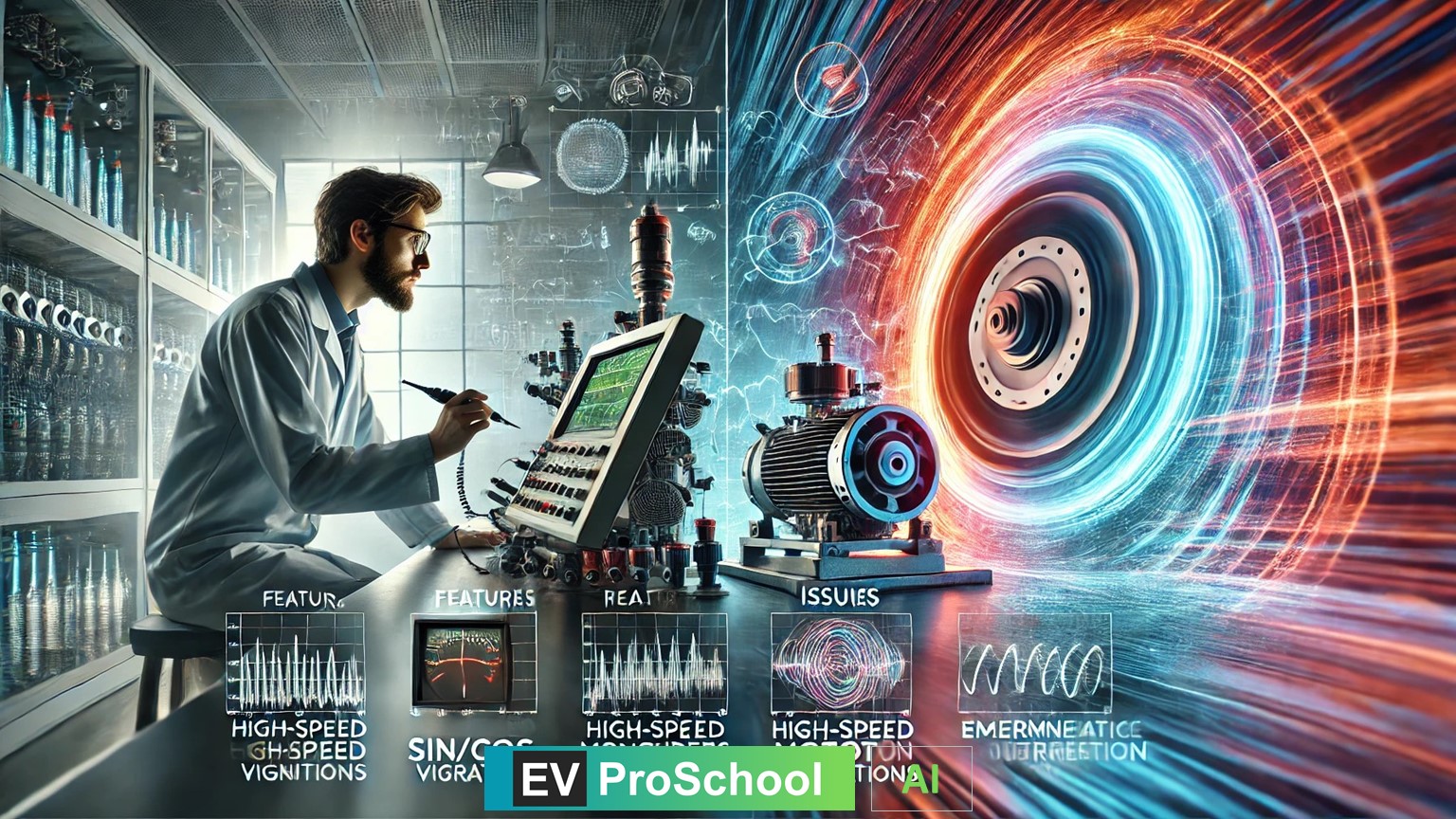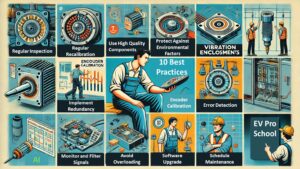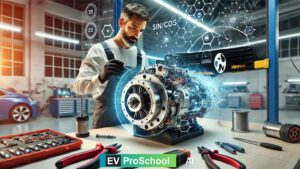Calibrating sin/cos encoders in high-speed interior permanent magnet (IPM) motor applications is a critical but challenging process. These encoders provide precise feedback for motor control, and errors during calibration can lead to performance degradation. Below are some common challenges encountered during this process:
1. High-Frequency Noise and Electromagnetic Interference (EMI)
Cause
High-speed IPM motors generate substantial EMI due to rapid switching in power electronics and high-frequency signals in the system. Sin/cos encoder signals, being analog, are particularly susceptible to noise.
Impact
- Distortion of sin/cos waveforms.
- Misinterpretation of position and speed data.
- Reduced calibration accuracy.
Mitigation
- Use shielded cables for encoder wiring.
- Implement proper grounding techniques and EMI filtering in the system.
2. Mechanical Misalignment
Cause
The alignment between the encoder sensor and the motor shaft is critical. Small deviations during installation or due to wear can cause misalignment.
Impact
- Non-orthogonal sin and cos signals.
- Increased phase errors and positional inaccuracies.
Mitigation
- Use precision mechanical fixtures for installation.
- Regularly inspect and realign the encoder.
3. Temperature Variations
Cause
High-speed motors experience significant temperature fluctuations during operation, which can affect encoder electronics and sensor materials.
Impact
- Drift in signal amplitudes and phases.
- Decreased reliability of calibration over time.
Mitigation
- Use encoders rated for high-temperature environments.
- Incorporate thermal compensation in the control algorithm.
4. Vibrations and Mechanical Stress
Cause
The high-speed operation of IPM motors introduces mechanical vibrations that can impact the encoder assembly.
Impact
- Loose or damaged encoder components.
- Fluctuations in signal quality.
Mitigation
- Use vibration-resistant encoder designs.
- Employ dampers or isolators to reduce transmitted vibrations.
5. Uneven Signal Amplitudes
Cause
Unequal amplitudes of the sin and cos signals can occur due to imperfections in the sensor or the target surface, such as a magnetic ring or optical disc.
Impact
- Non-ideal Lissajous curves, leading to calculation errors.
- Reduced dynamic range for signal interpretation.
Mitigation
- Implement gain adjustment in the encoder electronics.
- Use high-quality targets and sensors with minimal manufacturing defects.
6. Signal Drift Over Time
Cause
Long-term operation and environmental factors can cause encoder signals to drift, requiring recalibration.
Impact
- Gradual reduction in motor performance.
- Increased likelihood of faults during high-speed operation.
Mitigation
- Regular recalibration and maintenance schedules.
- Use encoders with self-calibration capabilities where possible.
7. Difficulty in Real-Time Signal Monitoring
Cause
At high motor speeds, capturing and analyzing sin/cos signals in real-time becomes challenging due to the rapid signal changes.
Impact
- Insufficient data for accurate calibration.
- Increased chances of undetected errors during operation.
Mitigation
- Use high-speed oscilloscopes and advanced data acquisition systems.
- Leverage real-time software tools for signal analysis.
8. Phase Error Between Signals
Cause
The phase difference between sin and cos signals may deviate from the ideal 90° due to manufacturing tolerances or calibration errors.
Impact
- Inaccurate angular position calculations.
- Degraded motor efficiency and performance.
Mitigation
- Use digital compensation techniques in the motor controller.
- Validate the phase difference during the calibration process.
Conclusion
Calibrating sin/cos encoders in high-speed IPM motor applications requires meticulous attention to detail and robust practices to overcome challenges like EMI, temperature effects, and mechanical stresses. Implementing advanced tools, precision techniques, and regular maintenance can significantly improve calibration accuracy and ensure reliable motor operation.
Investing time and effort in proper calibration not only enhances performance but also extends the lifespan of your motor system, making it a critical process in EV applications



